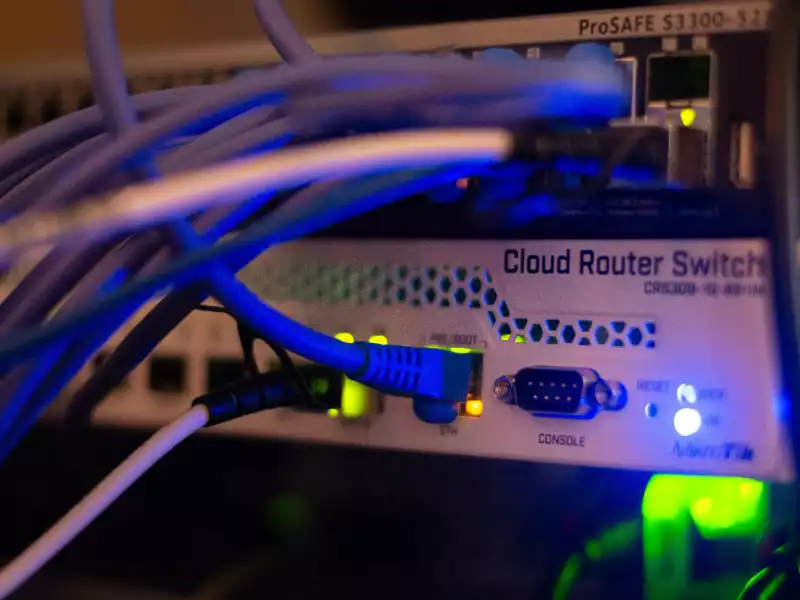- Network operating systems provide centralized management, enhanced security, and improved efficiency for modern networks.
- Explore the benefits of NOS, including scalability, cost-effectiveness, and integration with cloud and container technologies.
Centralized management and control
Network operating systems which use a centralised approach streamlining essential processes like resource allocation, user authentication, and policy enforcement, maintaining coherence and security all around the network. Administrators can apply updates immediately, maintain acceptable standards, and lower their likelihood of delays or vulnerabilities by performing everything from a single point of control. Due to policies and permissions are handed out automatically to all connected devices and users, this model also enhances compliance and speeds up troubleshooting.
At the basis of this functionality are resource allocation and user management. In order to ensure that only authorised users can access sensitive resources, administrators can centrally create, modify, and restrict user accounts applying tools such Active Directory in Windows Server or elaborate account management features in Linux distributions. Network operating systems additionally contribute to resource distribution less difficult by permitting administrators to precisely define shared amenities like storage, printers, and apps. By governing who has access to what resources and under which circumstances, this dual capability not only maximises efficiency but also strengthens security.
Also read: Q*Bird unveils scalable quantum key distribution for secure multipoint networks
Also read: Ericsson unveils genAI assistant to simplify 5G network operations
Enhanced security features
Any network has to include security, and network operating systems are constructed with powerful characteristics to fend off incidents while retaining system integrity. Only verified users are granted access to resources by means of complicated authentication and authorisation tools like multi-factor authentication, LDAP, and Kerberos. decrease risks by safeguarding sensitive data from unauthorised use, administrators can also apply fine-grained access controls, giving out permissions for specific roles.
With constructed firewalls and intrusion detection systems that monitor traffic and response to threats promptly, network operating systems enhance defences beyond access control. Windows Server offers elaborate firewall features designed to particular organisational requirements, while Linux-based platforms typically use tools like iptables and firewalld for flexible firewall management. When integrated, these features supply a comprehensive security approach that helps network administrators to proactively block inappropriate activity and shield their systems from constantly changing dangers.

Improved efficiency and productivity
Network operating systems have been developed for boosting network efficiency and performance, and allow corporations lower their costs while producing more. They help users and systems work together efficiently all across the network by optimising communication and resource sharing. A significant advantage includes efficient data sharing, which is made possible by protocols like NFS in Linux and SMB in Windows the fact let authorised users access and share files or folders without dependent on physical storage. This keeps information up on developments and easily accessible. Alternatively, administrators can schedule and script routine tasks like updating the system, copies of data, and inspection utilising automation tools like PowerShell in Windows or Bash in Linux. With automating these operations, productivity significantly rises, manual labour lowers, and error rates were minimised.
Also read: Three UK chooses Ericsson to replace Nokia in core network
Also read: FTTH Council highlights challenges with copper network holdouts
Scalability and flexibility
Due to they have been constructed to be adaptable to changes, modern network operating systems are beneficial for use by companies of all shapes and sizes. NOS can support an abundance of hardware platforms and evolve to adapt to shifting needs, regardless of if they are from small offices or big multinational companies. Networks comprising a few devices to thousands of nodes are capable of effectively administered by systems like Windows Server and Linux distributions, which may be expanded as their requirements grow. Additionally, there is flexibility, as commercial platforms like Windows Server feature secure APIs and integration tools, while open-source substitutes like Linux can be greatly customised. Businesses have the chance to create customised programs that fit their workflows owing to this openness.

Cost-effective solutions
Organisations can optimise their infrastructure and increase return on investment by implementing a network operating system at a reasonable cost. NOS simplifies operations and lessens reliance on physical devices by centralising management and resource allocation. While virtualisation technologies enable multiple virtual machines to run on a single server, further reducing equipment costs, shared access to printers, storage, and applications minimises redundant hardware. As central consoles and automation tools simplifies updates, checking, and troubleshooting a breeze, expenses related to maintenance are also lowering. Organisations can benefit from decreased operating expenditures, greater effectiveness, and a more sustainable approach to network management since fewer manual interventions and on-site visits are required
Modern trends and future-proofing
As technology changes, network operating systems are changing to support modern needs like cloud computing, containerisation, and the Internet of Things (IoT). Cloud integration is important. Cloud-based NOS give scalable networking, automatic setup, and easy connection with cloud services. This lets organisations grow more easily and keep flexibility. At the same time, containerisation tools like Docker and Kubernetes are making NOS support containerised applications. These systems give service discovery, load balancing, and isolation for containers. This helps organisations run applications faster and avoid conflicts between different applications.

